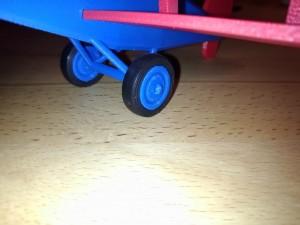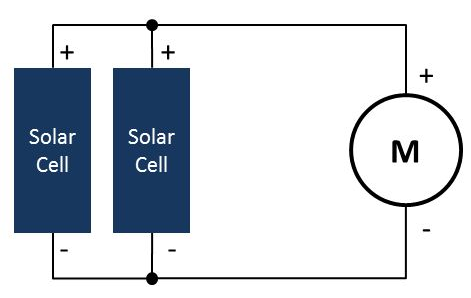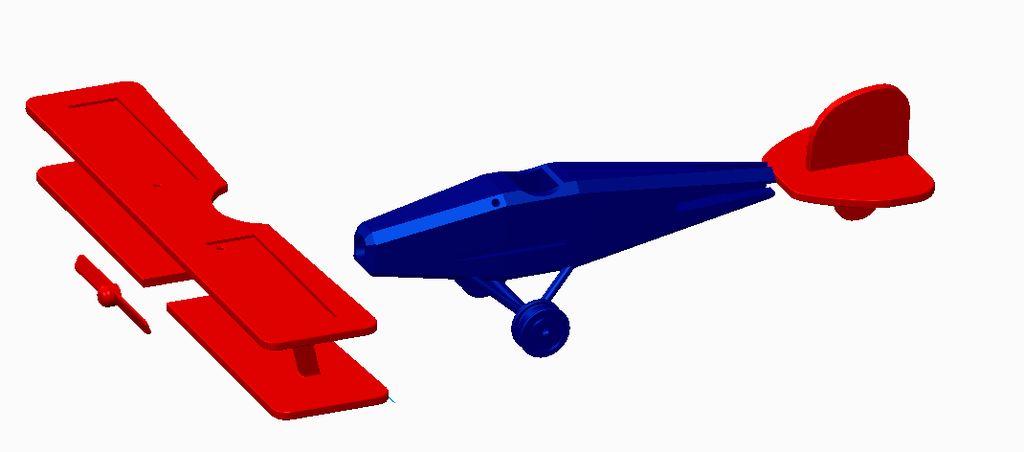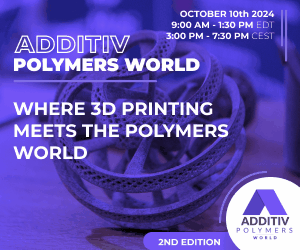This multi-color 3D-Printable bi-plane may not actually fly, but the solar powered micro motor will rotate the small planes propellor on a bright or sunny day. New Instructable user JoKu uploaded this project after using it to learn how to 3D model, 3D print and assemble the simple plane, and it makes a great educational project for students or makers new to 3D printing or creating simple circuits.
JoKu created the plane model using the CAD program Creo Parametric, which is an excellent professional CAD program, but is probably a bit overkill for a project like this. Unless you’ve had experience with this type of professional program, it is probably not a good choice to teach yourself how to 3D model. There are several easier 3D modelling programs to learn with that are available, many of them are even free. But JoKu seemed to want the challenge and he ended up with a pretty fun little project so I guess it all worked out. His Instructable provides you with a full  list of all of the parts that you will need, including suggested sources for the parts, and it does a pretty great job of walking you through the assembly process.
list of all of the parts that you will need, including suggested sources for the parts, and it does a pretty great job of walking you through the assembly process.
In order to allow for the use of multiple colors, and to make the printing process less complicated, the model was split into four separate printing jobs. So all you will need to do is pick the colors that you want your bi-plane to be, and what type of material that you want to use.
The first STL file that you will need to 3D print includes the main body of the plane, as well as the landing gear, axle and the wheels. While the mini motor won’t move the wheels, all of the parts are printed individually so they will roll once assembled.
But as with any 3D printing project, just because someone did the bulk of the design work doesn’t mean that you won’t have to do some 3D modelling yourself. You will need to acquire the rubber portions of the tires, and if you’re unable to find the same size that he used, you may need to adjust the size of your wheels. Also, depending on the type of engine you purchase you may need to adjust the model to accommodate the motor and leave room for it to be inserted into the plane’s body.
The second print job is the large main set of wings. The STL file was designed so they will print as one single piece that can be snapped together with the body. The fit does look very tight so you may need to finesse the pieces together. The third print job is the smaller set of rear wings, also printed as a single part and the rear wings should easily slot into the main body. The final print job is for the propeller, and it should have a hole in the center that attaches to the small motor. Depending on the type of motor that you use, you may need to slightly adjust this part as well.
JoKu does warn that depending on the print quality of your 3D printer, you may need to do some post processing work to all of your parts before you try to assemble them. But once you have your bi-plane assembled all you need to do is insert the previously wired solar panels into the wings and wire them to the small motor inside of the plane. Then, on the next sunny day you’ll have yourself a small bi-plane with a working propeller.
The Instructable does include the wiring and circuit diagram needed to make sure that the motor will be powered by the solar cells and the propeller will move. However, it doesn’t explain how to solder the parts and wires together, so if you’re new soldering or wiring you may need to take a look at one of the many basic soldering Instructables to make sure that you’re doing it all correctly.
Head on over to Instructables and get building. All you need to be an aerospace engineer is a 3D printer and a handful of inexpensive miniature parts. And once you finish your bi-plane make sure that you show it off in the 3D Printable Solar Powered Bi-plane forum on 3DPB.com.
Subscribe to Our Email Newsletter
Stay up-to-date on all the latest news from the 3D printing industry and receive information and offers from third party vendors.
You May Also Like
5 Stages to True Scale: Make Your Own Fleet of Metal 3D Printers
The additive manufacturing (AM) industry is now approaching true scale, where manufacturing is happening at volume. Critical parts, including millions of implants and thousands of rocket propulsion units, are being...
Titanium 3D Printing Powders to Reach $1.4B by 2032
Additive Manufacturing Research (AM Research), the leading authority in additive manufacturing (AM) market data and analysis, has released its latest report titled “Titanium Powder for Additive Manufacturing in 2024.” This...
Mosaic CEO Discusses $28M Round to Enable Supply Chain Resilience
Mosaic Manufacturing recently announced the closure of a $28 million (CAD) funding round, led by Idealist Capital, to accelerate the adoption of its automated 3D printing platforms, notably the Array...
Emerging AM Technologies Analysis: Where Are They Now, Part 3
In March 2023, AM Research published the “Emerging AM Technologies Analysis: 10 Companies to Watch” report highlighting 3D printing companies with the potential to disrupt the additive manufacturing (AM) industry....









































